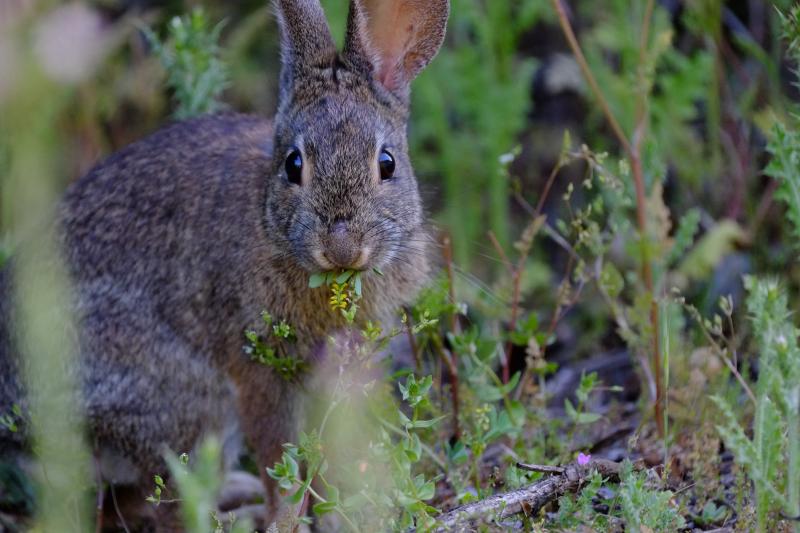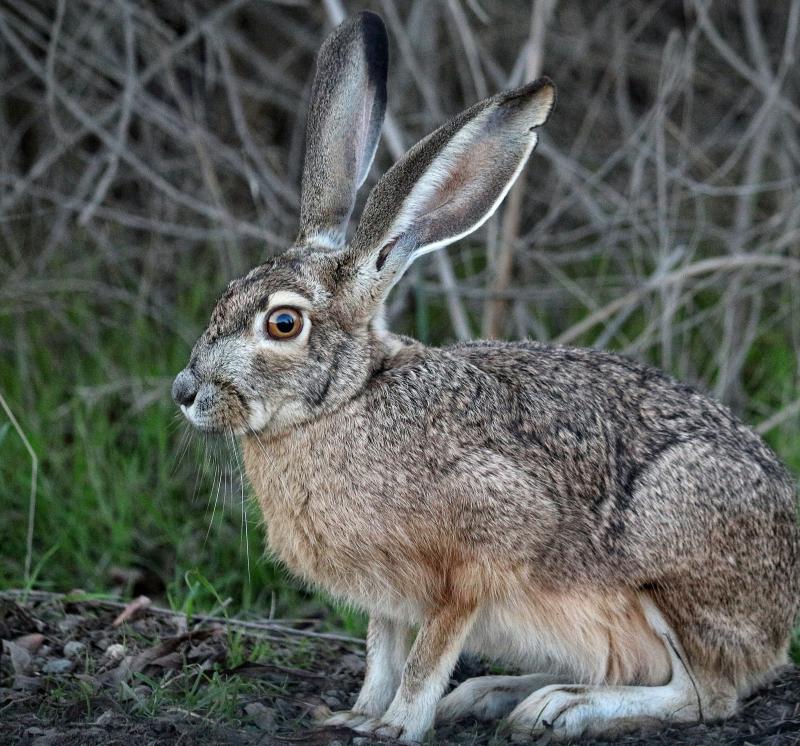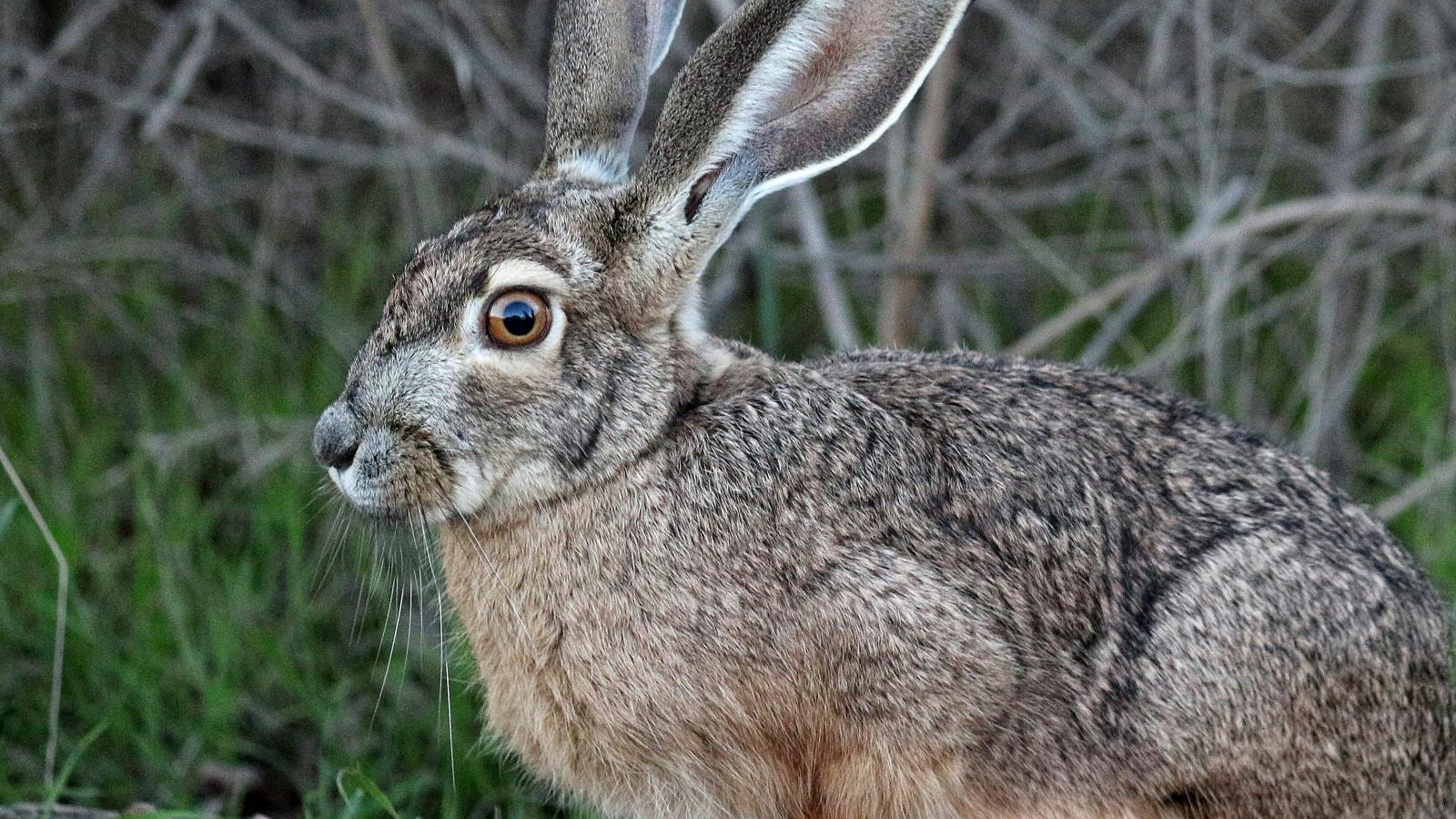There are two species of lagopmorphs (rabbits and hares) that are common in the Bay Area: the brush rabbit, and the black-tailed jackrabbit.
Western Brush Rabbit (Sylvilagus bachmani)
Western brush rabbits are a common sight along trails that wind through chaparral or other dense, brushy habitat. This species of cottontail rabbit can be found throughout the western coastal regions of North America, from northern Oregon to the southern tip of the Baja California Peninsula in Mexico. The brush rabbit is a small, grayish-tan-colored rabbit with short legs and a short tail that is white on the underside. Adult rabbits can measure anywhere from 12 to 14 inches long.
Brush rabbits most commonly live in thick chaparral vegetation, but can also be found in oak woodlands or even suburban areas. Unlike some other rabbit species, western brush rabbits do not dig their own burrows. Instead, they use the branches of their dense chaparral habitat to conceal themselves. However, they will occasionally use burrows made by other species such as ground squirrels or even American badgers.
Brush rabbits forage alone or in small groups, and mainly feed on grasses and other tender plants such as clovers or new growth on shrubs. They will also eat berries if available. They have many predators, including mountain lions, coyotes, gray foxes, bobcats, various raptors and snakes.
In the Bay Area, their breeding season lasts from December to May or June, and they will produce about 15 young in five or so litters. Their young are born with no fur and closed eyes. They are completely dependent on their mother for the first couple of days.

Black-tailed Jackrabbit (Lepus californicus)
Black-tailed jackrabbits are much larger than brush rabbits, and can be easily identified by their large ears and long legs. The black-tailed jackrabbit is one of the largest North American hares, and can reach lengths of over two feet! Despite the jackrabbit name, they are not true rabbits. Rather, they are close relatives of the true rabbits in the order Lagomorpha.
Black-tailed jackrabbits can inhabit a wide range of habitats as long as there in a sufficient diversity of plant species. They required mixed grasses, forbs and brushes for food, as well as shrub and tree cover for shelter. They seem to prefer areas that are at least moderately open, and will avoid super dense chaparral with closed cover. Like brush rabbits, black-tailed jackrabbits are an important prey species for many predators.
In California, black-tailed jackrabbits can breed nearly year-round, and number of litters depends on the availability of food and other resources. Female jackrabbits do not prepare burrows or elaborate nests for their young like many true rabbit species do, and will give birth in shallow holes called forms. Young jackrabbits are born with full coats of fur, and are mobile within minutes of being born. Females will not stay with their young or protect them, other than the short period when they are nursing.


